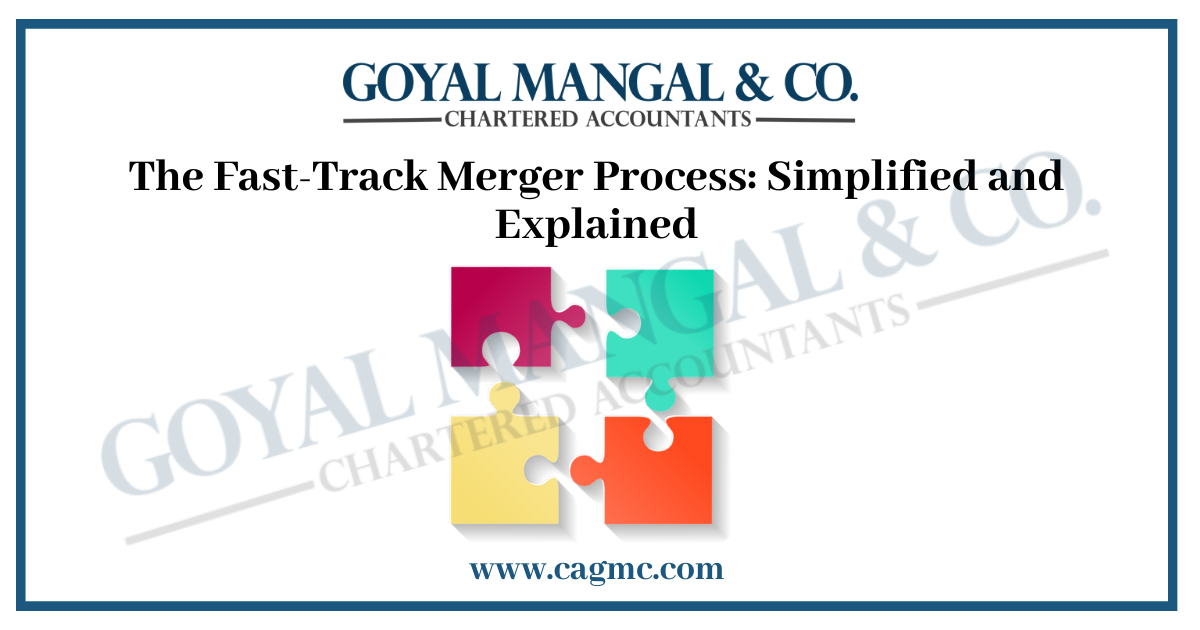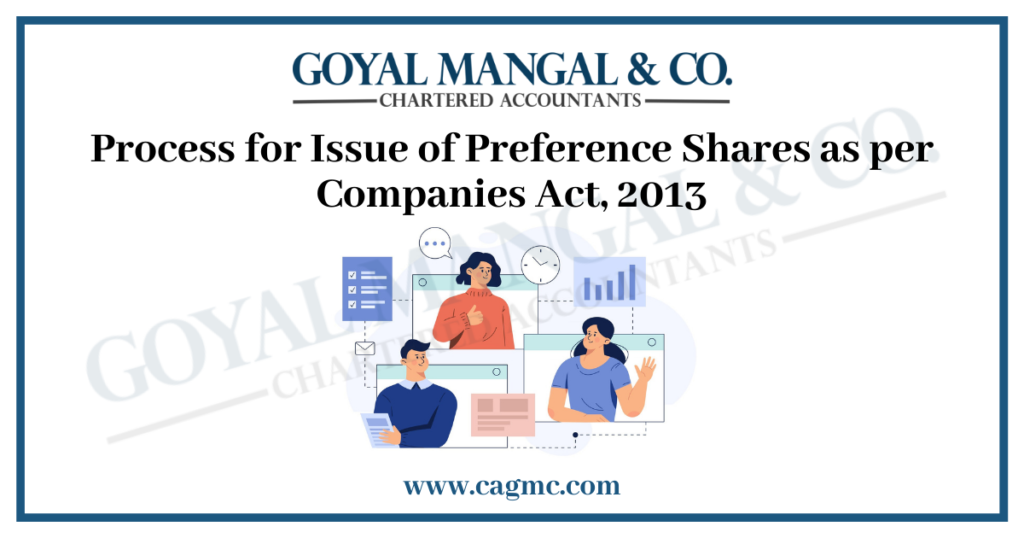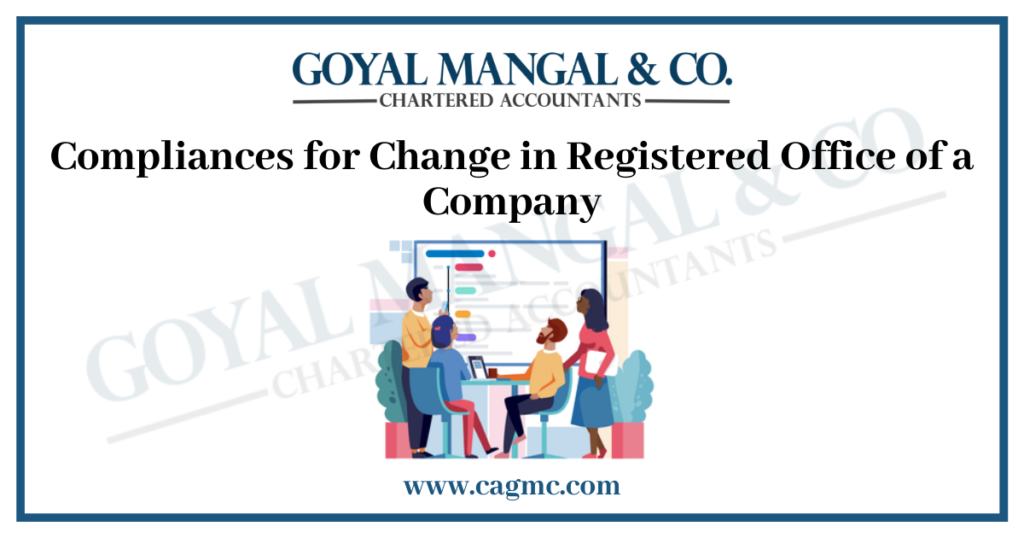
Fast-track mergers provide businesses with a simplified scheme to combine their operations with other companies using a quicker path. We’ll explain the complicated details of the procedure for a fast-track merger in simple terms so that everyone may understand it. This article aims to offer comprehensive insights into the concept of fast-track mergers, catering to both business owners and individuals seeking to understand the significance of such mergers.
Meaning of Fast Track Merger
A fast-track merger is like a speedy way for two or more companies to join forces and become one. It’s faster because it simplifies the usual lengthy process of merging. This can help businesses save time and money when they want to work together or become a bigger company. It’s like a shortcut to becoming one big family.
Section 233 of the Companies Act, 2013 includes the internationally recognized notion of the Fast Track Merger Process, which establishes a streamlined method for the merger and amalgamation of specific categories of organizations, such as small firms, holding companies, and subsidiary companies. This approach facilitates the expeditious and streamlined execution of merger and amalgamation procedures for these organizations, adhering to a predetermined timeframe. According to the Companies Act of 2013, it is explicitly stated that the act applies to all forms of compromises and arrangements.
Applicability of Fast Track Merger
The applicability of fast-track merger for the companies are as follows:
- The fast-track merger applies to small companies. Small companies are defined as those whose paid-up share capital does not exceed Rupees 50 Lakhs and whose turnover, as per the latest accounting records, does not exceed Rupees 2 Crore.
- The Fastrack merger applies to a holding and a wholly-owned subsidiary. A Holding and Wholly Owned Subsidiary Company has the potential to operate as either a publicly traded or privately held entity. If there are multiple wholly-owned subsidiaries, then for a merger with each wholly-owned subsidiary separate applications need to be submitted by the holding company.
- In the context of non-publicly traded entities, two or more small companies can go for a fast-track merger.
- Additional categories of companies may be designated periodically by the provisions outlined in the Companies (Compromises, Arrangements and Amalgamation) Rules of 2016.
Which companies are not applicable for Fast Track Merger
The following categories of companies are excluded:
- Publicly traded corporations (excluding amalgamation that involves a parent company and its wholly-owned subsidiary corporations)
- Section 8 companies refer to certain kinds of businesses that are recognized and regulated under the relevant legal framework.
- Companies or corporate entities are subject to specific legal regulations and frameworks.
Whose approval is required for Fast Track Merger?
The Fast Track scheme necessitates the consent of the following:
- The Board of Directors from both firms.
- Ninety per cent of the stockholders in terms of quantity and ninety per cent of the debtors in terms of monetary value.
- The power assigned to the Regional Director by the Central Government for approval of fast-track merger.
Prerequisites for Fast Track Merger
The following are necessary conditions to facilitate the expedited merger procedure:
- The scheme must be registered with the official liquidator and the ROC in the relevant jurisdiction.
- Gathering shareholders and creditors together for a vote.
- If the creditors are willing to quickly give their written consent, the meeting is unnecessary.
- A declaration of solvency from each company involved
What are the Approvals needed in the Board Meeting for Fast Track Merger?
Both the transferor and transferee company require the convening of a board meeting to talk about and authorize the following matters:
- The Board meeting is conducted to get approval for the merger and seek authorization to submit an application to the Regional Director by the director or company secretary.
- The time, date and venue of the shareholder meeting need to be decided.
- Know the fair value of shares and to get the certificate showing shares fair value it’s necessary to choose a valuer.
- If the most recent financial statement originates the Board Meeting by more than six months, it is necessary to endorse the auditor’s report and supplementary financial statements for approval.
- A certificate issued by a Statutory Auditor confirming that the accounting treatment for the proposed Scheme complies with the relevant Accounting Standards.
- Grant approval for the Declaration of Solvency by the Board of Directors.
- The act of compiling a comprehensive list of creditors and quantifying the aggregate amount of liabilities owed to said creditors.
- Additionally, it is necessary to establish a specific schedule for the timing, date, and location of the creditors’ meeting.
What does the mandatory details scheme of the Merger should include?
The Fast-Track Merger checklist includes the following particulars:
- The necessary information to be provided includes the names of the parties and companies engaged, as well as the appointed date and effective date.
- Please provide the share exchange ratio, if it is applicable, and any other relevant considerations, if they exist.
- Provides an overview of the individuals serving as promoters, directors, and key managerial personnel (KMPs) inside the organization.
- A summary of the Valuation Report provided by the Registered Valuer should be included.
- Provide information regarding any capital or debt restructuring that has taken place.
- The outstanding balance owed to the unsecured creditors.
- The rationality and benefits arising from the merger, as well as their perception by the Board, Members, and creditors.
- Provide information regarding any ongoing investigations or legal processes involving the company.
- The disclosure of the impact of the merger on key management personnel (KMPs) and other directors/promoters, if relevant.
- The accounting treatment clause, by Accounting Standard 14, refers to the specific guidelines and procedures that must be followed when recording and reporting financial transactions related to a certain item or event.
- The clause pertains to the way the Transferor Company conducts its business as a trustee, acting on behalf of the Transferee.
- The subject of this discussion pertains to the management and treatment of employees, workers, and individuals engaged in contractual arrangements within an organizational context.
- Authorised Capital and consolidation of the same upon conclusion of the merger.
- The inquiry pertains to the dates of board meetings, as well as the meetings of members and creditors, about their approval and the subsequent legitimacy of such approvals.
- The clause about the dissolution of the transferor company.
- The clause asserts that the implementation of the Scheme is contingent upon certain conditions and will only come into force with the requisite approval.
- Provisions about the act of making modifications.
- The impact resulting from the absence of permission for the Scheme.
Form CAA-9 Notice
By Section 233(a) of the legislation, the Transferor and Transferee Companies are required to send a notice of the proposed Scheme to the Registrar of Companies (RoC) and Official Liquidator (OL) at the location of the respective companies’ registered office, as well as to individuals impacted by the Scheme.
This notice serves to invite any objections or suggestions regarding the proposed Scheme. The aforementioned Notice shall be presented in the prescribed format, specifically Form CAA-9. The Registrar of Companies (RoC) and Official Liquidator (OL) are required to submit any objections or suggestions they may have within 30 days from the date of issuance of the notice regarding the proposed Scheme.
Fast Track Merger Process
The Process of the Fast-Track Merger is described below:
- The Fast-Track Merger can only be done if the company’s MOA includes the provisions that give the authority to amalgamate and merge the company with other companies, if the MOA of the company does not include such provision, then the merger can’t be done, for the merger, first MOA needs to be amended and its provision should allow the merger and amalgamation.
- The Financial statements as of date need to be prepared by both companies.
- The draft scheme of the merger needs to be prepared by both companies
- For the approval of the merger scheme Board meeting needs to be conveyed.
- The CAA-9 need to be sent to ROC & Official Liquidator
- By Rule 25 Sub-rule (1), it is required to submit a Notice of proposed plan to the Registrar of Companies (ROC) and the official Liquidator, inviting their objections or suggestions, if any, using Form CAA-9.
- The objection or suggestion will be reverted by ROC within 30 days
- The Official Liquidator will have a period of 30 days to provide any objections or suggestions in response to the request for reversion.
- The central Government can apply for a merger with the Central Government within 60 days of receiving the scheme if the Central Government thinks the scheme is not aligned with the interest of creditors or it’s not good for the overall public interest.
- The NCLT will evaluate the application and scheme as per Section 232 of the relevant legislation and the application will contain the government’s objection
- If the central government does not express any disagreement or submit an application to the National Company Law Tribunal (NCLT), it is understood that the central government does not have any objection to the proposed scheme.
- CAA-10 related to the declaration of solvency need to be filed to ROC.
- The approval of shareholders and creditors needs to be taken.
- NOC from creditor
- The board meeting needs to be conducted to call EGM.
- The solvency declaration. CAA-10, and a detailed statement should be sent along with a notice of the general meeting.
- A convening of a general meeting is scheduled to obtain consent for the proposed merger scheme. Any objections or suggestions received from the Registrar of Companies (ROC) and the Official Liquidator, if applicable, will be duly considered during this meeting, to approve the scheme.
- According to Section 233 (4) of the relevant legislation, the scheme must be accepted by creditors representing at least 90% of the value of the enterprises involved. This approval can be gained either through a formal meeting or through written consent from the creditors, eliminating the need to convene a physical meeting.
- MGT-14 need to be filed.
- The approved scheme intimation needs to be submitted to regulatory authorities.
- According to Rule 25 Sub-rule 4(a), it is mandated to submit Form CAA-11 (Notice of approval of the scheme of merge) in Form GNL-1 to the Registrar of Companies (ROC) within 7 days after the conclusion of the General Meeting. This submission should include a comprehensive statement as specified in GNL-1.
- The Form CAA-11 should be submitted manually to both the Official Liquidator and the Regional Director within 7 days following the conclusion of the General Meeting.
- The Regional Director will dispatch a questionnaire to the transferee company, with a stipulated deadline of 7 days for completion and submission of responses.
- Upon the reception of the scheme, and in the occurrence of any objections or suggestions, the Registrar of Companies (ROC) or the Official Liquidator (OL) shall promptly notify the Regional Director (RD) within 30 days.
- Upon careful evaluation of the proposals presented, the company’s Regional Director possesses the authority to either reject or approve the proposed strategy.
- The Order to Approve the Scheme, as required by Rule 25 Sub Rule (6), will be submitted on Form CAA-12. (As the deadline for applying with the Tribunal is 60 days, an order should be expected within that timeline for the Fast-Track Merger)
- By Section 233(7), the INC-28 must be submitted within one month of receiving the Order approving the plan.
The effect of registering under the Fast Track Scheme
The registration of the scheme yields the subsequent consequences:
- The transfer of property or liabilities results in the transferee corporation assuming ownership and responsibility for these assets and obligations.
- The charges, if present, on the property of the transferor company are both applicable and enforceable as charges on the property of the transferee firm.
- The transferee corporation assumes responsibility for ongoing legal proceedings initiated by or against the transferor company.
- In cases where the scheme includes provisions for the acquisition of shares from dissenting shareholders or the resolution of outstanding debts owed to dissenting creditors, any remaining unpaid amount becomes the responsibility of the recipient firm.
Conclusion
Fast-track mergers can be a strategic move for companies seeking efficiency and synergy. While the process may seem complicated, with careful planning, expert advice, and adherence to legal requirements, it’s possible to successfully navigate the merger journey. By understanding the steps and nuances involved in Fast-Track Merger, businesses can make informed decisions and harness the benefits of this corporate strategy.


